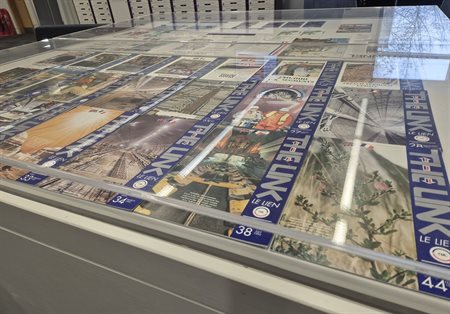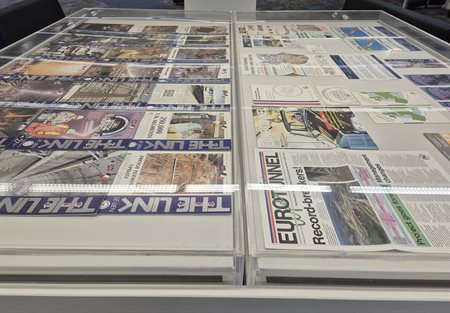November 2024 marks the thirtieth anniversary of the first journey by fare paying passengers on a Eurostar train from London to Paris. It also marks the eighth anniversary of a visit that I took to look through the Archives and Special Collections for material that might be useful for teaching on our history programmes here at Brunel University of London. As I looked through the catalogues of the Transport Archive and found the Channel Tunnel collection, I realised that I had found something that would be a fabulous resource not only for teaching, but also for understanding the history of Britain and France’s relationship in the nineteenth and twentieth centuries. The tunnel was reportedly first proposed in 1802, when the French mining engineer Albert Mathieu Favier approached Napoleon Bonaparte with his idea for a tunnel under the English Channel. Favier’s tunnel would be wide enough to carry a horse and carriage, lit by oil lamps, and boasted an artificial island in the middle of the sea to allow passengers to change horses. This plan was shelved when war broke out again the following year, yet it nonetheless marked a starting point. It was followed by over a hundred further schemes for some sort of Channel crossing that were proposed between Favier’s scheme and Eurotunnel’s opening in 1994.

Accounts of many of the schemes are held in the Channel tunnel collection, along with details of the Channel Tunnel Company which lobbied the British government to agree to a tunnel, and even started digging in 1880. Through the collection’s correspondence, discussions, newspaper cuttings, surveys and photographs, we can gain a glimpse of how Victorian engineers planned to build a tunnel, and why they wanted one. We also get a sense of just how strident the opposition was, as various military leaders and politicians fretted that the tunnel might provide a means of access for invading armies, unwanted incomers, or rabid dogs. As the tunnel was negotiated between France and Britain between 1802 and 1994, we can trace their evolving relationship, their shifting attitudes towards their borders, and what they thought about each other. The tunnel was never ‘just a tunnel,’ and the archive shows us why it mattered so much.

Dr Alison Carrol is Reader in European History at Brunel University of London, and is currently working on a history of the idea of the Channel tunnel. You can read more about this project here, and watch a video series about it here.